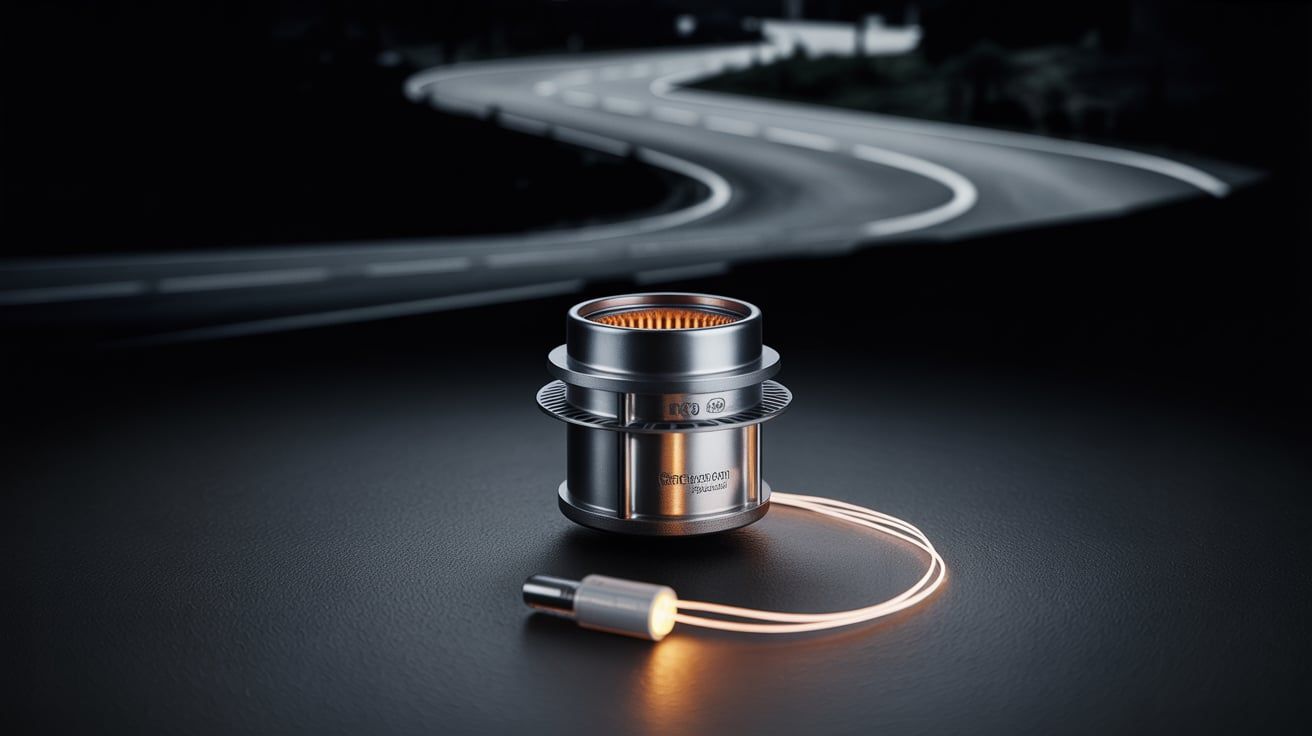The $20 Car Part That Prevents $3,000 Repairs
Introduction: The Silent Killer of Catalytic Converters
Imagine this: you're cruising down the highway, enjoying a beautiful day, when suddenly your car starts sputtering and losing power. The check engine light illuminates, mocking your carefree drive. You pull over, frustrated, and eventually limp your vehicle to the nearest mechanic. The diagnosis? A failed catalytic converter. The repair bill? A staggering $3,000 or more. What if I told you that a simple, inexpensive part, often overlooked, could have prevented this costly catastrophe? We're talking about the humble oxygen sensor, a vital component in your car's emissions system.
The oxygen sensor, often abbreviated as O2 sensor, plays a crucial role in ensuring your engine runs efficiently and cleanly. It's a small device, typically costing around $20 to $100 depending on the vehicle and brand, but its impact on your car's health and your wallet is immense. Ignoring a failing O2 sensor can lead to a cascade of problems, culminating in the dreaded catalytic converter failure. Let's dive into why this seemingly insignificant part is so important and how you can prevent a major repair bill.
Understanding the Oxygen Sensor's Role
The oxygen sensor is essentially your car's air-fuel ratio monitor. It sits in the exhaust stream, typically before and after the catalytic converter, and measures the amount of oxygen present in the exhaust gases. This information is then relayed to the engine control unit (ECU), the car's computer, which uses it to adjust the air-fuel mixture entering the engine. A properly functioning O2 sensor ensures that the engine receives the optimal air-fuel ratio for efficient combustion and minimal emissions.
Think of it like this: your engine needs a precise recipe of air and fuel to run smoothly. Too much fuel (a rich mixture) leads to wasted fuel, increased emissions, and potential engine damage. Too little fuel (a lean mixture) can cause overheating, poor performance, and also damage. The O2 sensor is the chef's assistant, constantly monitoring the ingredients and making sure the recipe is perfect. Without it, the engine is essentially cooking blind, leading to potential disasters.
The Link Between O2 Sensors and Catalytic Converters
So, how does a faulty O2 sensor lead to a catalytic converter failure? The answer lies in the delicate balance of the exhaust gases entering the converter. The catalytic converter's job is to reduce harmful pollutants in the exhaust, such as hydrocarbons, carbon monoxide, and nitrogen oxides, into less harmful substances like carbon dioxide, water, and nitrogen. It achieves this through chemical reactions that require a specific temperature and a balanced mixture of gases.
When an O2 sensor fails, it can send incorrect information to the ECU, causing the engine to run rich (too much fuel) for extended periods. This excess fuel doesn't burn completely in the engine and ends up entering the catalytic converter. The converter then has to work overtime to process the unburned fuel, leading to overheating and eventual failure. Think of it like overloading a furnace – it can only handle so much before it breaks down. Furthermore, the unburned fuel can physically damage the catalyst material inside the converter, rendering it useless.
Symptoms of a Failing Oxygen Sensor
Fortunately, a failing O2 sensor often exhibits noticeable symptoms before it causes catastrophic damage. Recognizing these signs early can save you a significant amount of money and hassle. One of the most common symptoms is a decrease in fuel economy. If you notice that you're filling up your gas tank more frequently than usual, it could be a sign that your O2 sensor is not functioning correctly and the engine is running rich.
Other symptoms include a rough idle, hesitation during acceleration, and a noticeable decrease in engine power. You might also experience a failed emissions test, as the car will be producing higher levels of pollutants. And, of course, the check engine light is a major indicator. While the check engine light can illuminate for various reasons, it's always a good idea to have your car scanned to determine the underlying issue. Many auto parts stores offer free code scanning services.
Diagnosing a Faulty Oxygen Sensor
While the symptoms of a failing O2 sensor can be indicative, a proper diagnosis is crucial to confirm the problem. A mechanic can use a scan tool to read the diagnostic trouble codes (DTCs) stored in the ECU. Common codes associated with O2 sensor issues include P0130-P0167 (O2 sensor circuit malfunction) and P0420 (catalyst system efficiency below threshold). However, simply reading the codes isn't enough.
A skilled technician will also use a multimeter or oscilloscope to test the O2 sensor's voltage output and response time. This allows them to determine if the sensor is actually functioning within its specified parameters. They might also visually inspect the sensor for damage or contamination. In some cases, a faulty O2 sensor can be caused by other underlying issues, such as vacuum leaks or exhaust leaks, so a thorough inspection is essential.
Replacing the Oxygen Sensor: A DIY Project?
Replacing an oxygen sensor is often a relatively straightforward repair that many DIY enthusiasts can tackle themselves. The sensor is typically located in the exhaust manifold or exhaust pipe, and it's usually held in place by a threaded connection. Before attempting the replacement, it's crucial to disconnect the negative battery cable to prevent any electrical shorts. You'll also need the correct size wrench or socket to remove the old sensor.
When installing the new sensor, be sure to apply a small amount of anti-seize compound to the threads to prevent it from seizing in the future. Tighten the sensor to the manufacturer's specified torque. After the replacement, you may need to clear the diagnostic trouble codes using a scan tool. While replacing an O2 sensor is generally a simple task, it's important to consult your car's repair manual or online resources for specific instructions and torque specifications. If you're not comfortable working on your car, it's always best to leave the repair to a qualified mechanic.
Preventative Maintenance and Longevity
While O2 sensors are relatively durable, they do have a limited lifespan. Most manufacturers recommend replacing them every 60,000 to 100,000 miles. However, certain factors can shorten their lifespan, such as exposure to contaminants like oil, coolant, or excessive fuel additives. Regular maintenance can help extend the life of your O2 sensors and prevent premature failure. This includes ensuring that your engine is properly maintained, with regular oil changes and tune-ups.
Also, avoid using excessive fuel additives, as some of these can damage the O2 sensor. If you notice any symptoms of a failing O2 sensor, address them promptly to prevent further damage to your car's emissions system. By proactively maintaining your O2 sensors, you can save yourself a significant amount of money in the long run. This is especially important as the automotive industry shifts towards electric cars, where maintaining the efficiency of supporting systems becomes even more critical.
The Future of Oxygen Sensors in Transportation
As the automotive industry continues to evolve, particularly with the rise of electric cars, the role of oxygen sensors might seem less significant. However, even in hybrid vehicles and some advanced combustion engine designs, O2 sensors still play a role in optimizing engine performance and reducing emissions. Furthermore, the principles behind O2 sensor technology are being adapted for use in other areas of transportation, such as monitoring air quality in enclosed spaces and optimizing fuel efficiency in large transport vehicles.
The core function of measuring and controlling air-fuel ratios remains crucial for efficient and clean transportation, regardless of the power source. As transportation systems become more complex and interconnected, the need for accurate and reliable sensor technology will only increase. Whether it's ensuring optimal combustion in a traditional engine or monitoring the performance of a fuel cell, sensors like the O2 sensor will continue to play a vital role in shaping the future of transportation.
Conclusion: A Small Investment, a Big Return
The oxygen sensor, that seemingly insignificant $20 car part, is a prime example of how a small investment in preventative maintenance can save you from a major repair bill. By understanding its role, recognizing the symptoms of a failing sensor, and taking proactive steps to maintain it, you can protect your catalytic converter and keep your car running smoothly for years to come. Don't wait until the check engine light illuminates and your car starts sputtering. Take the time to inspect your O2 sensors and replace them as needed. Your wallet and your car will thank you.
So, what are you waiting for? Check your car's maintenance schedule and see when your O2 sensors are due for replacement. If you're experiencing any of the symptoms we've discussed, don't hesitate to have your car inspected by a qualified mechanic. Remember, a little preventative maintenance can go a long way in keeping your transportation reliable and affordable. Take control of your car's health today and avoid that $3,000 repair bill!



